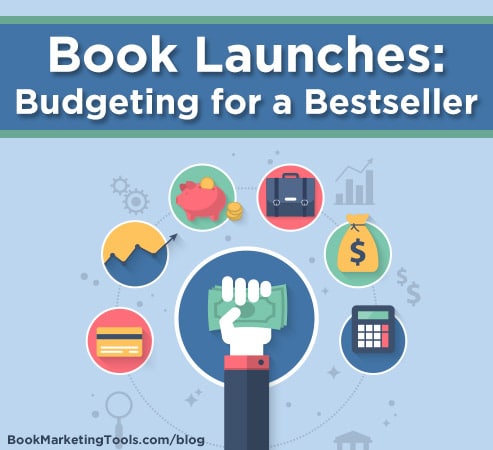This is the part during book launch planning where Negative Nancy’s and Debbie Downers usually come out to play. They’ll tell you that a book marketing program involves costs you can’t recover. They’ll tell you it takes big teams and big bucks to see any kind of return on your investment (ROI). They’ll tell you it’s not what you know but rather whom you know that gets results.
Well, tell that to the growing list of self-published wordsmiths who are killing it in sales and blasting their way up bestseller lists with almost no money and zero connections. Ask the likes of Hugh Howey, Mark Dawson, Nick Stephenson, Joanna Penn, and Amanda Hocking whether they started with big budgets and relationships with influencers.
We’ll save you the time: you’ll hear a resounding “no.”
Growing Your Author Business
Now many of these authors have grown bigger book business than most authors could ever dream of building during their writing careers. Sure, some top Indies have gone on to sign on with traditional publishing houses and signed multi-million dollar movie deals. It doesn’t happen to everyone, but that doesn’t mean you can’t work at making it happen to you—and it does take work.
As a writer, there’s something you have to get over very quickly if you haven’t already: book production and book marketing isn’t free. However, these expenses don’t have to be a complete loss. Marketing with the right tactics has the potential to catapult your book into the realm of the big players, but only so long as you measure results and keep track of how much you’re earning in relation to your expenses. Many successful authors are only successful because they’ve learned how to grow their fan bases and market their books correctly.
What you need to do in terms of your launch plan is determine how much you have available to spend pre-launch, during launch day, and post-launch. It doesn’t have to be much, but the reality is that even hosting a website generates a bill. Once you have your figures worked out, you’ll need to evaluate which marketing tactics are going to give you the most bang for your buck because it’s simply impossible to implement them all unless you’re Scrooge McDuck with your own money bin.
Here are some additional considerations:
- If you’re growing your network early, there may be opportunities to trade or barter things like services, influence, experience, etc.
- Some costs during your launch will be one-time investments while others might be ongoing monthly fees for as long as you’re offering your book for sale.
- There are plenty of tasks you can DIY during the launch process. For example, sites like Canva offer an awesome way to save while creating attention-grabbing images as a non-designer.
- Costs can differ between non-fiction and fiction titles, as well as from genre to genre.
Don’t forget that many tactics don’t require a financial investment at all but rather a time investment. In these cases, you’ll need to stipulate how much time you’re willing to spend on each tactic because that too will have an opportunity cost (i.e. time spent promoting means time spent away from writing.)
Budgeting requires strategy. There’s no clear-cut outline for how much you should spend on certain aspects of a launch. While one author might spend $1,000 building a website, another might spend $10,000. The key is to use your resources wisely so that you attain maximum output for your input.
Have you picked up cost-saving tips as an author? We’d love to hear any advice you have for other authors struggling with their launch budgets, so be sure to leave a comment below. If you’re looking to pick up book launch tips of your own, download a free copy of our ultimate book launch checklist and then subscribe to our blog for fresh content every week.


